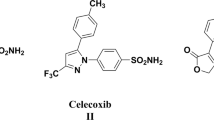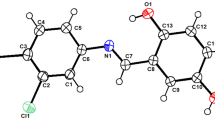Infections are as mature as life itself and considered to be the incursion of an individual’s body to diseases caused by pathogenic microbes such as bacteria, fungi, and viruses. These diseases can also be transferred from one person to another, either directly or indirectly, contributing further to the wide spread of the infections. To handle this issue, it is required to synthesize new analogs that contest mutated bacteria. The 3-carboxamide derivatives of moxifloxacin (MOXI) were obtained following a simple synthetic route and characterized by IR, 1H-NMR, and mass spectrometry. These compounds were then tested against different strains of bacteria and fungi. Additionally, the compounds were assessed for enzyme inhibition properties against urease and carbonic anhydrase. It was observed that all derivatives produced in vitro antibacterial activity greater than the parent drug against Salmonella typhi, Proteus mirabilis, Pseudomonas aeruginosa, and Bacillus subtilis. In the same way, all compounds possessed antifungal activity against Fusarium solani and Trichophyton rubrum. Compounds 3A1, 3A2, and 3A4 showed moderate activity against urease whereas only 3A3 showed promising results against carbonic anhydrase-II. The statistical analysis helped to establish precise changes in antimicrobial and enzyme inhibition activities of newer synthesized analogs compared with the MOXI. It was concluded that compounds 3A1, 3A2, and 3A4 showed activity against E. coli comparable with or higher than the parent drug.


Similar content being viewed by others
References
WHO. Available online: http: //www.searo.who.int/topics/infectious.diseases/en/
https: //healthblog.pliro.com/10-common-diseases-pakistan/
T. Hussain, Adv. Life Sci., 2, 46 – 47 (2015).
H. C. Neu, Science, 257, 1064 – 1073 (1992).
A. D. Pranger, T. S. van der Werf, J. G. Kosterink, et al., Drugs, 7, 161 – 171 (2019).
L. S. Redgrave, S. B. Sutton, M. A. Webber, L. J. Piddock, Trends Microbiol., 22, 438 – 445 (2014).
J. J. Casal and S. E. Asís, Austin Tuberc. Res. Treat., 2, 1007 – 1010 (2017).
J. Huang, M. Wang, B. Wang, et al., Bioorg. Med. Chem. Lett., 26, 2262 – 2267 (2016).
X. Huang, Y. Bao, S. Zhu, et al., Bioorg. Med. Chem. Lett., 25, 3928 – 3932 (2015).
I. Garza, M. J. Wallace, D. Fernando, et al., Arch. Pharm. Chem. Life Sci., 350, e1700029 (2017).
Y. Q. Hu, J. Fan, X. F. Song, et al., J. Heterocycl. Chem., 55, 246 (2018).
Z. Xu, X. F. Song, J. Fan, J. Heterocycl. Chem., 55, 77 – 82 (2018).
T. R. Towle, C. A. Kulkarni, L. M. Oppegard, et al., Bioorg. Med. Chem. Lett., 28, 1903 – 1910 (2018).
M. Nisar, S. A. Khan, M. R. Shah, et al., New J. Chem., 39, 8080 – 8086 (2015).
S. Gul, N. Sultana, M. S. Arayne, et al., J. Chem., Article ID 306385, 12 pages (2013).
P. Kafarski, M. Talma, J. Adv. Res., 13, 101 – 111 (2018).
V. Achal, X. Pan, Curr. Microbiol., 62, 894 – 902 (2011).
C. H. Nightingale, Pharmacotherapy, 20, 245 – 256 (2000).
S. A. Sadeek, W. H. El-Shwiniy, M. S. El-Attar, Spectrochim. Acta A Mol. Biomol. Spectroscopy, 84, 99 – 110 (2011).
Q. Li, J. Xing, H. Cheng, et al., Chem. Biol. Drug. Des., 85, 79 – 90 (2015).
A. A. Soayed, H. M. Refaat, D. A. N. El-Din, Inorg. Chim. Acta, 406, 230 – 240 (2013).
B. S. Jursic and Z. Zdravkovski, Synth. Commun., 23, 2761 – 2770 (1993).
C. S. Cooper, M. D. Tufano, P. K. Donner, D. T. Chu, Bioorg. Med. Chem, 4, 1307 – 1315 (1996).
S. Shamim, S. Gul, A. Khan, et al., Pharm. Chem. J., 55(10), 1033 – 1039 (2022).
K. M. Khan, S. Iqbal, M. A. Lodhi, et al., Bioorg. Med. Chem., 12, 1963 – 1968 (2004).
Y. T. Ho, A. Purohit, N. Vicker, et al., Biochem. Biophys. Res. Commun., 305, 909 – 914 (2003).
E. Bayram, M. Senturk, O. I. Kufrevioglu, C. T. Supuran, Bioorg. Med. Chem., 16, 9101 – 9105 (2008).
M. Akhtar, N. Sultana, M. S. Arayne, et al., Pak. J. Pharm. Sci., 32(Special), 1301 – 1306 (2019).
M. Akhtar, N. Sultana, M. S. Arayne, et al., Pak. J. Pharm. Sci., 32(Suppl), 1201 – 1206 (2019).
Author information
Authors and Affiliations
Corresponding author
Rights and permissions
Springer Nature or its licensor (e.g. a society or other partner) holds exclusive rights to this article under a publishing agreement with the author(s) or other rightsholder(s); author self-archiving of the accepted manuscript version of this article is solely governed by the terms of such publishing agreement and applicable law.
About this article
Cite this article
Akhtar, M., Gul, S., Shamim, S. et al. Moxifloxacin Amide Analogs as Antibacterial and Antifungal Agents: Synthesis, Characterization, and Enzyme Inhibition Studies. Pharm Chem J 57, 1008–1017 (2023). https://doi.org/10.1007/s11094-023-02978-y
Received:
Published:
Issue Date:
DOI: https://doi.org/10.1007/s11094-023-02978-y




